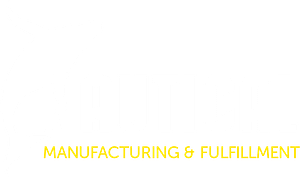Understanding inventory valuation methods equips businesses with the knowledge needed to make informed choices aligned with their operational objectives and financial goals. Two of the primary valuation methods are FIFO and LIFO. In this article we will discuss the different types of inventory valuation methods and help businesses find out which works best for them and their products.
What is Inventory Valuation?
Inventory valuation is the accounting process of assigning value to a company’s inventory. A clear understanding of inventory valuation can help maximize profitability. It also ensures the company can accurately represent the value of inventory on its financial statements.
Inventory valuation is crucial for businesses as it directly impacts financial reporting, profit calculations, and decision-making. Accurate valuation ensures that financial statements present a true and fair view of a company’s position, influencing key metrics such as gross profit and net income. The chosen valuation method also has tax implications, affecting the amount of taxes owed. It plays a pivotal role in assessing a company’s financial health, influencing lending and investing decisions.
What are the Inventory Valuation Methods?
What Is FIFO?
FIFO (First In, First Out) is a method of inventory valuation. In FIFO, the assumption is that the first units of inventory purchased or produced are the first to be sold or used. In other words, the oldest inventory items are considered to be sold first before the more recently acquired ones. FIFO is often favored in industries where the products have a limited shelf life or may become obsolete quickly.
Let's say a company purchases 100 units of a product at $10 each and later acquires another batch of 50 units at $12 each. If the company sells 80 units, under the FIFO method, it is assumed that the first 80 units came from the initial purchase at $10 each, and the remaining 20 units are still valued at the higher cost of $12 each.
Example of FIFO (First In, First Out)
FIFO Pallet Storage
As it relates to palletized storage, the FIFO process means that the first items placed into storage will also be the first to be taken out once orders are placed. In a FIFO pallet system:
- Loading: As new inventory comes into the fulfillment center, it is placed in the back to ensure that it isn’t picked before the older inventory.
- Picking: As items are ordered and need to be picked, the pickers in the warehouse will simply pick from the front of the storage section.
Common storage structures that facilitate FIFO pallet management include flow racks, push-back racks, and certain types of conveyor systems. These systems are designed to allow easy access to the oldest items in the inventory, promoting efficient rotation and utilization of goods.
What is LIFO?
LIFO (Last In, First Out) is another method of inventory valuation. In contrast to FIFO, the LIFO method assumes that the most recently acquired or produced units of inventory are the first to be sold or used. In other words, under LIFO, the newest inventory items are considered to be sold first before the older ones.
LIFO can also have tax advantages in certain situations because it may result in a lower reported profit and, consequently, lower income taxes. However, it can also lead to issues in periods of inflation, as the cost of goods sold reflects the higher, more recent prices, potentially understating the value of ending inventory.
Using the same scenario as before, if a company purchases 100 units of a product at $10 each and later acquires another batch of 50 units at $12 each, and then sells 80 units, under the LIFO method, it is assumed that the 80 units sold came from the most recent purchase at $12 each. This leaves the remaining 70 units valued at the earlier cost of $10 each.
Example of LIFO (Last In, First Out)
LIFO Pallet Storage
In a LIFO system, the last palletized items placed into storage are the first to be removed. This is the opposite of the FIFO (First-In, First-Out) system. In a LIFO pallet system:
- Loading: When new inventory arrives, it is placed at the front of the storage rack or area, pushing the existing inventory further back.
- Picking: When items need to be picked for shipment or use, they are taken from the front of the storage area, where the newest items are located.
It’s important to note that the use of LIFO for inventory valuation may have financial reporting and tax implications, and companies need to carefully consider the impact of their chosen inventory management methods on their financial statements and tax obligations.
Other Inventory Valuation Methods
In addition to FIFO and LIFO, several other inventory valuation methods are used in business. Some of the notable ones include:
- Weighted Average Cost: The average cost per unit is calculated by dividing the total cost of goods available for sale by the total number of units available for sale. This method assumes that all units, regardless of when they were acquired, have the same average cost.
- Specific Identification: Each unit of inventory is individually costed based on its specific purchase price or production cost. Commonly used for unique or high-value items where it’s feasible to identify and trace the cost of each specific unit.
- Standard Costing: Costs are predetermined based on standard rates for materials, labor, and overhead. Actual costs are then compared to these predetermined standards. Useful for businesses with stable and predictable production processes.
- Base Stock Method: Maintains a constant base stock level, and the cost of goods sold is based on the average cost of the units in the base stock. Often used in industries where maintaining a minimum inventory level is crucial.
- Retail Inventory Method: Calculates the cost of goods sold and ending inventory based on the ratio of the cost of goods at retail prices to the total retail price of the goods. Commonly used in retail businesses where inventory includes a variety of products with different markups.
- Just-In-Time (JIT): JIT is a system where inventory is kept to a minimum, and goods are ordered and received just in time for production or sale. This method reduces carrying costs but requires close coordination with suppliers.
- EOQ (Economic Order Quantity): EOQ is a formulaic approach that calculates the optimal order quantity to minimize total inventory costs, including carrying costs and order costs.
FIFO vs LIFO – What Makes Sense for My Business?
The choice between inventory valuation methods depends on various factors related to your business, industry, and financial objectives. Here are some key considerations to help you make an informed decision between the two primary methods– FIFO and LIFO:
- What Is The Nature Of Your Inventory?: If your products have a limited shelf life or are perishable, FIFO may be more appropriate as it ensures that older stock is sold first, reducing the risk of obsolescence. However, a LIFO approach might be suitable for industries where the cost of goods tends to rise over time, such as during inflationary periods.
- Are There Standard Inventory Valuation Practices in Your Industry?: Consider the standard practices within your industry. Some industries may have a preference for one method over the other.
- Consider the Inflationary Environment: LIFO may be more suitable in an inflationary environment where prices are rising, as it reflects the current, higher costs in the cost of goods sold.
- What Are Your Management Goals?: If your management goals involve presenting higher profits, FIFO might be more favorable. If managing tax liabilities is a priority, LIFO might be considered.
Why are LIFO and FIFO Important for Order Fulfillment?
LIFO & FIFO have implications for order fulfillment and overall supply chain management. The choice between these methods can impact how products are allocated, picked, and shipped, influencing the efficiency and cost-effectiveness of the fulfillment process. Here’s why FIFO and LIFO are important to fulfillment:
- Order Accuracy: FIFO ensures that the oldest inventory is used or shipped first. This is crucial for products with expiration dates or those that have specific batches associated with them. FIFO helps prevent the shipment of outdated or perishable goods, contributing to order accuracy and customer satisfaction.
- Reduction of Obsolescence: FIFO can help minimize the risk of product obsolescence by ensuring that older inventory is used or sold before newer items. This is particularly important for industries with rapidly changing technology or fashion trends.
- Inventory Holding Costs: FIFO can contribute to lower holding costs as older, potentially more expensive inventory is used or sold first. This method can provide reduced storage costs associated with carrying excess or outdated inventory.
- Flexibility in Inventory Management: FIFO allows for easier adaptation to just-in-time (JIT) and lean inventory management practices, where older inventory is continuously rotated out. This can lead to a more efficient and streamlined fulfillment process.
Inventory Valuation FAQ
What is the difference between FIFO and LIFO?
FIFO (First In, First Out) and LIFO (Last In, First Out) are inventory valuation methods. FIFO assumes that the oldest inventory is sold first, while LIFO assumes that the newest inventory is sold first.
How does FIFO impact financial statements?
FIFO tends to result in a higher ending inventory and lower cost of goods sold, potentially leading to higher reported profits on the income statement.
What are the tax implications of using LIFO?
LIFO may provide tax advantages, especially in inflationary periods, as it can result in a lower reported profit and, consequently, lower income taxes. However, tax regulations play a crucial role in its feasibility.
Are there specific industries where FIFO is more commonly used?
FIFO is commonly used in industries with non-perishable goods or those where the flow of goods is best represented by selling the oldest inventory first, such as manufacturing or electronics.
How Nautical Helps Businesses Reduce Their Storage Costs
Nautical works with all of its customers to provide best-in-class warehousing services while keeping costs low. With our state-of-the-art inventory management system, we are prepared to handle any and all inventory regardless of the valuation method. And with our brand new 465,000 sq ft. warehouse in Kansas City, we are prepared to scale with you as your business grows.




